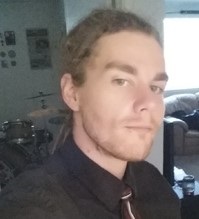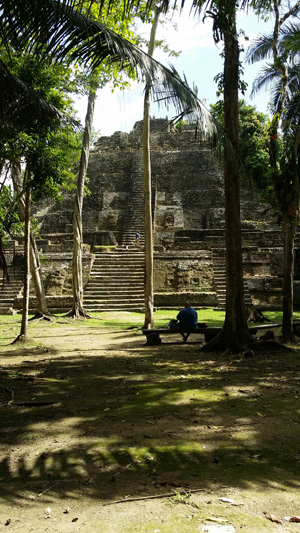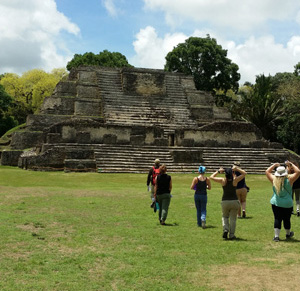
Anthropology senior Jesse Bain had the opportunity to participate in the Rio Bravo Archaeological Survey in Belize with the aid of the Amanda Jones Field Study Abroad Award. He shares his experiences and plans for future exploration.
The Rio Bravo Archaeological Survey (RBAS), which operates in Belize under a permit issued from the Institute of Archaeology to Dr. Fred Valdez, Director of the Programme for Belize Archaeological Project (PfBAP), is essentially a Maya archaeology field school that trains students in archaeological field methods within the context of a state-of-the-art research project and is situated in an unexplored, tropical rainforest in northern Belize.

As a volunteer, I was trained in excavation methods, survey and topographic mapping using a TDS (Total Data Station), GPR (Ground Penetrating Radar), feature plan mapping, artifact processing, tape and compass axial mapping, and archaeological interpretation. The site that our group worked at specifically is a unique Maya commoner settlement that has been named “Chawak But’o’ob”, which is Mayan for “long land.”
The specific task I was given for this season was to excavate a Maya commoner household in order to learn about their constructive methods and household activities. My excavation unit was 4 meters by 1 meter, and included inside the house foundation, the door jam, and a midden (ancient trash depository) in front of the structure.
Most of what I recovered were thousands of pottery sherds and modified lithic debris used as construction fill, but there were a few interesting finds such as obsidian fragments, rare colors of chert fragments, decorated pottery sherds, and a partial ceramic vessel that appears to belong to an incensario (further analysis is needed to determine function). Probably the most important find was discovered by happenstance, which included modified bedrock that was hollowed out and sealed with capstones to encase something extremely important within an artificial cavern beneath the house floor.

With consultation from my project director, Dr. Stanley Walling, we think it may be an ancient Mayan tomb that was built to house a relative of whomever had occupied the land originally, but the tomb remains unopened as it was discovered at the end of the season. As of this point, the tomb hypothesis is only speculative until excavations next year either confirm or disprove it. I hope to return next year and continue to explore.
